Jimmie Johnson: The Motor Sport Interview
He first raced on sand and aimed for IndyCar. Instead, Jimmie Johnson matched Petty and Earnhardt to become the new king of NASCAR

Jimmie Johnson is a true American hero, a NASCAR legend with his own chapter in the sport’s history. Born and bred in California, he was racing bikes, buggies and trucks in the desert when he was still in school and had a Chevrolet contract as a teenager. His dream was IndyCar but Chevy steered him towards North Carolina and NASCAR where he was immediately quick on asphalt, right at home in the big saloons. A long and stable relationship with Chevy and the Hendrick team brought him seven NASCAR Cups, five of them consecutively, equalling the record set by Richard Petty and Dale Earnhardt, and two wins at the Daytona 500. Two years in IndyCar with Chip Ganassi proved a tough challenge and now JJ has set his race suit aside (mostly) as joint owner of the Legacy Motor Club NASCAR team, running Toyotas in the Cup series next year. Jimmie looks back on a stellar career and ahead to a new challenge.
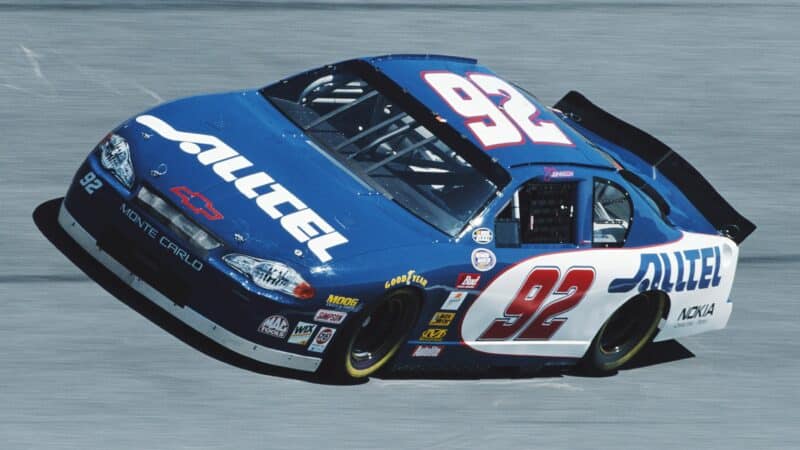
Driving for Herzog Motorsports in the Busch series, 2000
Getty Images
Motor Sport: You started out racing motorcycles as a kid. Was that ever a career path for you?
Jimmie Johnson: Not really. My parents became concerned at how injury-prone I was, so with all the injuries and a big commitment from my family, we decided to move away from the bikes when I was about 14.
The energy and commitment that motorcycle racing required really helped me understand the discipline you needed, mentally and physically, to jump all the obstacles in motor sport and those lessons carried forward into my four-wheeled career. At first it was off-road, sports desert buggies, then I got the opportunity as a development driver for Chevrolet in their stadium trucks. I didn’t even have a driving licence but I had a contract with Chevrolet… and that led to racing in the top division of both stadium racing and desert trucks. At this point in the journey I was still at high school, racing the trucks, travelling round the country, and it wasn’t until I was 21 I thought this could be a career. It was an incredible time, a lot of fun. At school I was the odd one out, you know, because back then nobody [in my circle] really knew about or had experienced racing trucks or cars.
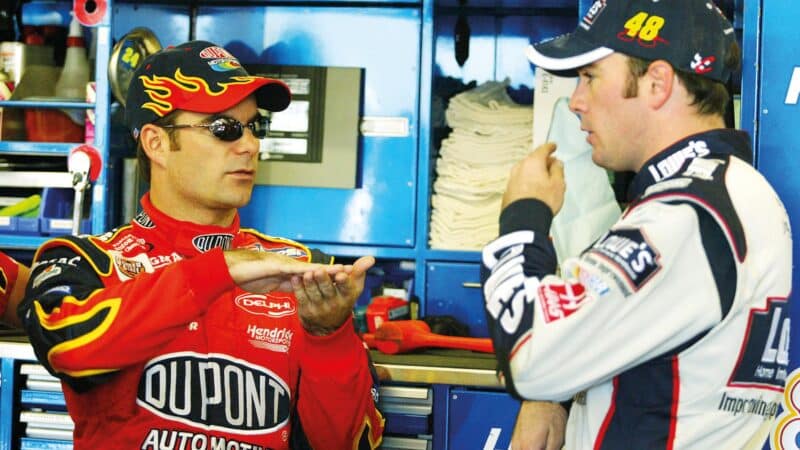
Jeff Gordon was an early mentor, team-mate and inspiration
Getty Images
MS: What led you to NASCAR? How did that big step forward come about?
JJ: My dream was to do IndyCar, and initially Chevrolet was leading me that way, but then we heard that General Motors was going to pull out of IndyCar. They said if I wanted a professional career on the asphalt I should consider moving to Charlotte in North Carolina and do NASCAR. So in 1997 I immediately bought a one-way ticket and I’ve been there ever since.
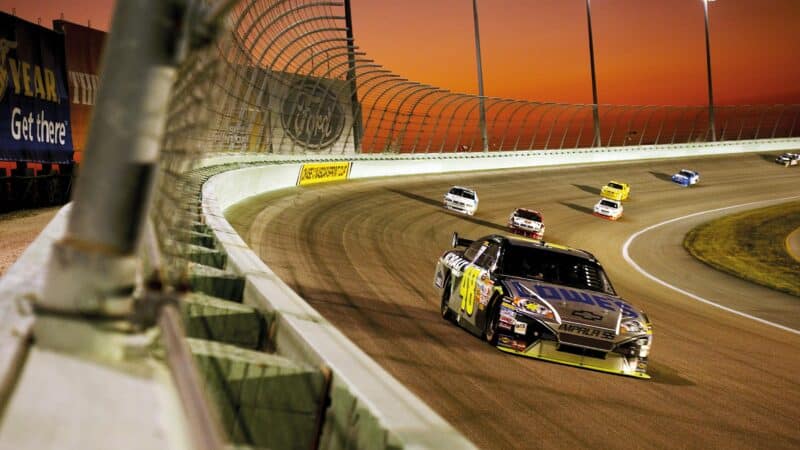
Under a blood-red sky at Homestead, Miami in 2008, the middle year in Jimmie Johnson’s run of five consecutive NASCAR Cup titles.
Getty Images
MS: Coming from California, did you feel like an outsider arriving in Charlotte, the home of NASCAR?
JJ: I really didn’t. Jeff Gordon, who came from a similar racing background in California, had been there for some time, and there were other guys from other places who were doing really well. OK, there were certain tracks we went to where the fans were, shall we say, a little less welcoming, but in general I had great support and felt very welcome. Jeff Gordon was someone I had really looked up to. He’d blazed the trail, and he opened up doors for me and other drivers. He helped me towards the drive with Rick Hendrick’s team when I met him in 2000 while I was doing the Busch series with Herzog Motorsport. I was already good friends with Ricky Hendrick, Rick’s son, and he’d told Jeff a lot about me, about my potential, that I’d already had some good results in the ASA and Busch races. So that led to four races with Hendrick in 2001 and my first full season in 2002.
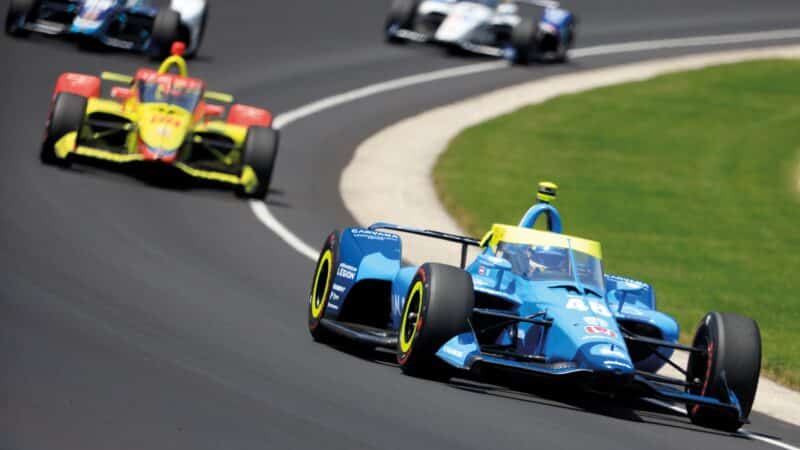
Johnson finally made it to the Indy 500 with Ganassi in 2022, crashing out on lap 194. The late career switch was a brave move, and a struggle
Getty Images
MS: How easy was it to adapt to racing on the asphalt tracks, and to stock cars, in the early years before signing with Rick Hendrick’s NASCAR team?
“Jeff Gordon blazed the trail. I really looked up to him”
JJ: From the actual driving perspective I was already at a pretty high level but I knew nothing at all about the cars. I didn’t know how to adjust them. Racing in trucks it was all about the jumps and bumps, dealing with a desert surface, and now I was on smooth asphalt and not having to worry about cornering, but there were technical things that I just had no idea about. I’d qualify well but I still didn’t know how to make adjustments to the car during the race. I didn’t even know what they were talking about with these stock cars early on. It was all new to me.
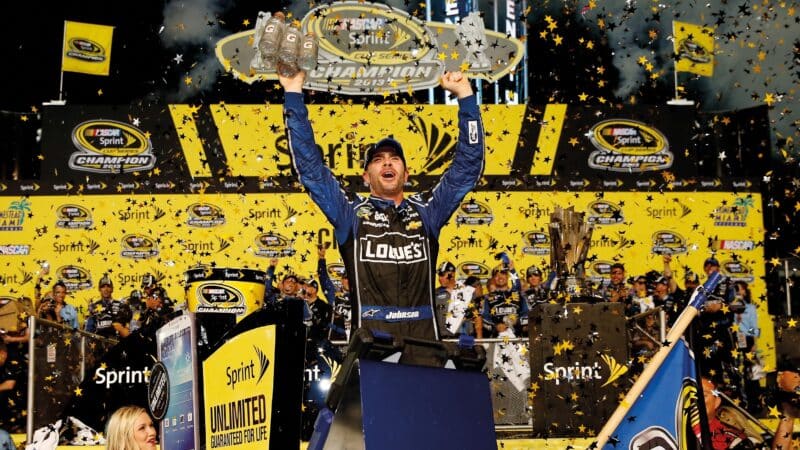
Proving the doubters wrong at Homestead, 2013
Getty Images
MS: How important was it to get that seat with Hendrick’s respected and successful team?
JJ: Oh, without a doubt, to join that team and work with my chief engineer Chad Knaus was a huge step forward. I mean, Hendrick is like a racing factory, super-impressive – the facilities are incredible. I would not have had all the success without the leadership and guidance from Rick and Chad. They really helped me to develop as a NASCAR driver. There was a great chemistry, a stable relationship for many years, and that’s very important to a driver. There are so many layers to build on for any sportsman at that level and with a team like Hendrick and Chad as my engineer, I had great support behind me. We had such a passionate desire to win, to work on every aspect to be the best. When we won those five championships consecutively there were some low periods in there too but we’d never settle for second best. Testing was allowed in those days. Chad and I would load up the test hauler, go to the track, and work, work, work around the clock. We didn’t have families back then, we were young, spent all our time working, making ourselves better, that’s all we focused on. We were aware of how special that five-year run was and we didn’t want to let it slip away. And there was also a fear of failure. That’s a powerful motivator.
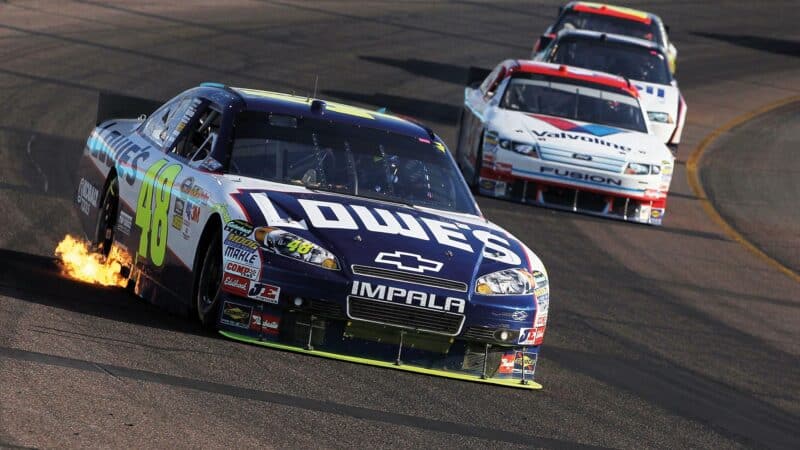
Leading AJ Allmendinger at Phoenix in 2010.
Getty Images
MS: The NASCAR schedule was brutal – 36 races in a season all across the States, plus all the testing. How did you deal with such a punishing series?
JJ: Yeah, it was tough, for sure. I was racing for 19 years and in the first half of my career I did miss seeing friends and family, but I was with my girlfriend [now his wife Chandra] and we made the most of the travelling, saw a lot of the States, and we had a great time. In the later years it was a grind, now we had children growing up. So yeah, there was their routine to consider, and the second half of my career the schedule was more difficult. But you deal with it and then there was the desire Chad and I had to win those last two Cup series championships in 2013 and 2016.
MS: Put me in the car for that thrilling NASCAR pack racing when you’re running nose to tail, three, four abreast.
JJ: It’s like being in a boat on a lake. You’re in the wake of the boat ahead, your car is punching a hole in the air, so where you place the car changes the airflow. There are places where the airflow is very low – we call those dead spots – so you learn quickly not to be there, and you edge the front of the car into a place that allows higher airflow, a better wake. At places like Daytona and Talladega, being in that wake is useful. You feel the extra speed. The leader is a sitting duck, he’s punching the hole, using more fuel, so you’re thinking all the time about the best place to be.
You can’t see much around you, ahead or behind, but you might be able to see through the windscreen of the guy ahead. That’s where trust comes into play, but you need to be aware of what’s happening in your lane. If you want to create a pass, you drag the brake, slow down your lane, allow the cars behind you to stack up, and that energy from behind finds its way forward to you over a third of the lap. Then you might see an opening, but everyone is playing this game, so timing is everything. I guess it’s a bit like bicycle racing when they’re riding in a pack.
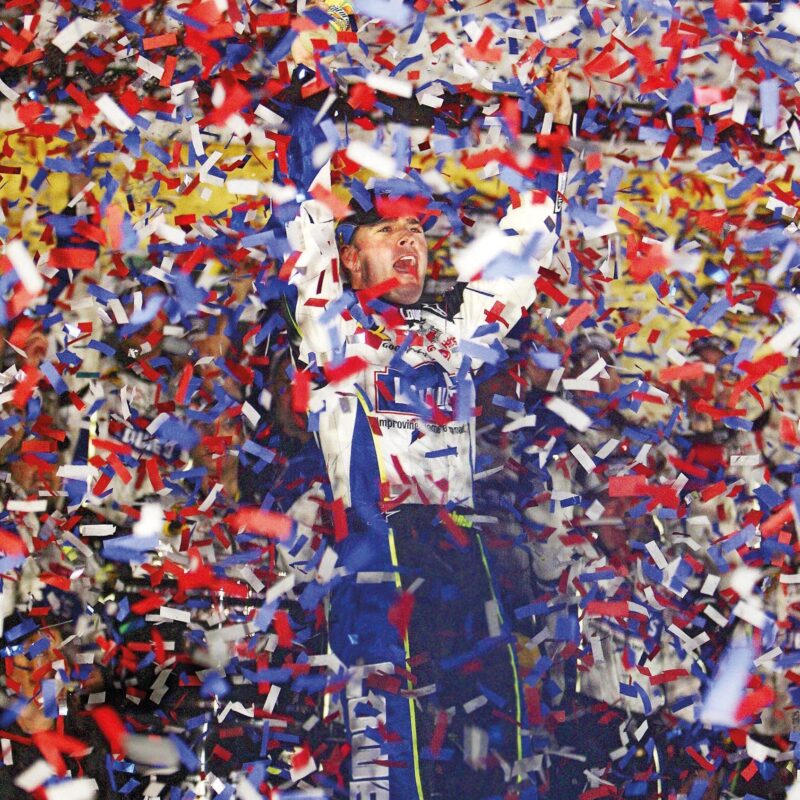
Lost in confetti after a first Daytona 500 win, 2006
Getty Images
MS: You won the Daytona 500 twice. Is winning that race as important as winning the championship itself?
JJ: I don’t think so. I won my first Daytona before I ever won a championship, and I did realise that victory gave me a title, a status, that no other race can or ever will. The 500 is a stand-alone race, the biggest draw, but it’s below winning those seven Cup titles in the bigger picture.
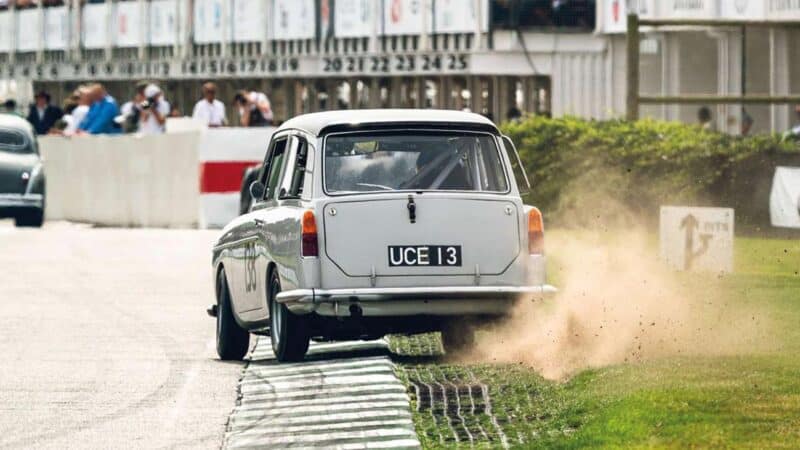
A40 high jinks at Goodwood
Goodwood
MS: Having won five championships in five years you won two more at the end of your career. Did they mean more in some ways?
JJ: Yeah, without a doubt, I needed to prove the doubters wrong. They were quick to say I wouldn’t be the same in 2010 when my first daughter was born and then again in 2013 when our second daughter was born. So that was a motivation and you realise you don’t have as much time left so there’s a different sense of urgency. People don’t realise how important a wife and family is to all careers, the support you have at home, the understanding of the schedule involved, accepting the opportunities that pop up when there’s been no advance notice and they might have made other plans. So yeah, that’s important for any sportsman, anyone in a demanding career. I tried to retire twice, and both times it failed, so winding down from racing at the top level is definitely a problem.
“You might be able to see the track through the screen of the car ahead”
MS: So what was the motivation to do IndyCar – to go up against mainly younger and more experienced drivers in a competitive series?
JJ: It was my original dream. After so many years full-time in NASCAR I wanted to slow down a bit and IndyCar has far fewer races in the season – 38 down to 17 seemed like a nice reduction. I knew I was going to struggle, but it was a challenge. My speciality was NASCAR and not a high-downforce single-seater, but I wanted to try it. I quit caring about the criticism, about what people were saying, what was on social media, and Chip [Ganassi] was very encouraging and understanding all the way. He wanted me to have that opportunity, go on that journey. I felt like I had earned the right to do it. I had a great sponsor in Carvana, and I enjoyed every minute of it.
The Indy 500, as a great occasion, was everything I’d hoped it would be but in the race itself I was surprised at how physical it was to overtake in the dirty air running in the pack. When the Speedway is full, all those fans, the pageantry, the energy of the place, was an incredible experience and it was just so frustrating that a caution put me at the back of the field for the second part of the race.
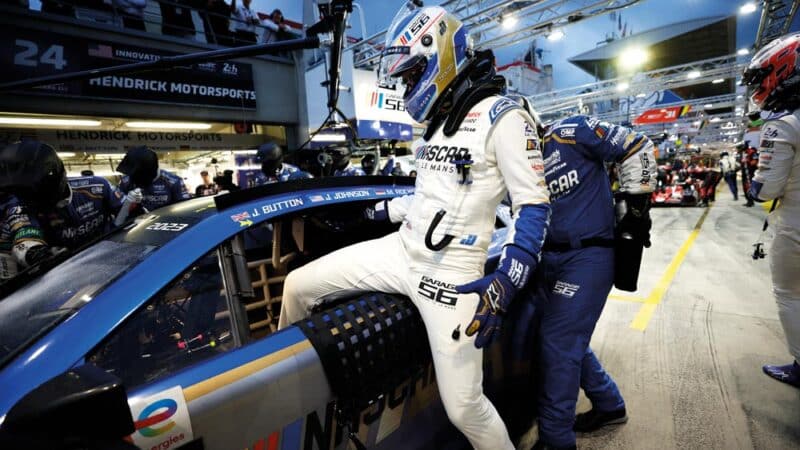
Climbing in for a Le Mans stint as Jenson Button steps away in June.
Getty Images
MS: We have to talk about Le Mans in the Garage 56 Chevy NASCAR. The whole place seemed to be rooting for you.
JJ: Yeah, what a great experience, incredible to be representing US motor sport, and we could really savour the moment. We’d worked so hard, testing, practising pitstops, developing the car – we were totally buttoned up by the time we got there for the race weekend. The car was actually really well-suited to Le Mans. We had more pace than we’d seen in the simulations and testing, and there was so much excitement surrounding bringing that car to the race. It was some fine print deep in the rule book that put us a lap down at one point. The ‘innovation car’ does not get a waiver when the field was under caution so, when we made a pitstop under the safety car but when they packed up the field to go racing again, the GT category was given a waiver to pass the leader and we didn’t get that. So when there was another safety car we did things differently and in the end we were able to drive right back up to where we were, which was great. I mean, we were racing for a win in the GT category. The Hendrick team did a great job, of course, and the driver line-up was decided early on. We spent a lot of time together testing, so that worked well too.
“With right-hand drive the gearshift is on the wrong side… but hey”
MS: What about the future? You now have joint ownership of a NASCAR team and you’ve talked about doing some Cup races yourself next year.
JJ: Yeah, I’m very excited, sharing ownership with business partner Maury Gallagher. We’ve re-branded the Richard Petty team, calling it Legacy Motor Club. I’m very focused on the business side of this, talking to sponsors, and we’re looking good. We’ve signed with Toyota which is exciting because they run eight cars, far fewer than Chevrolet. This means we’ll have access to a lot more information. I will always appreciate what Chevrolet did for me, everything we accomplished together, and I’m just so thankful they took a chance on me as a kid from California all those years ago. The record-breaking success we shared together will always be in the history books but now I am committed to building a winning team with Toyota. I will do some races, we’re working on when, where and how, and meanwhile I’m working with Maury on the business side, on sponsor relations. But sure, I will have input on the competition side of things with the drivers and right now I plan to do the 500 at Daytona.
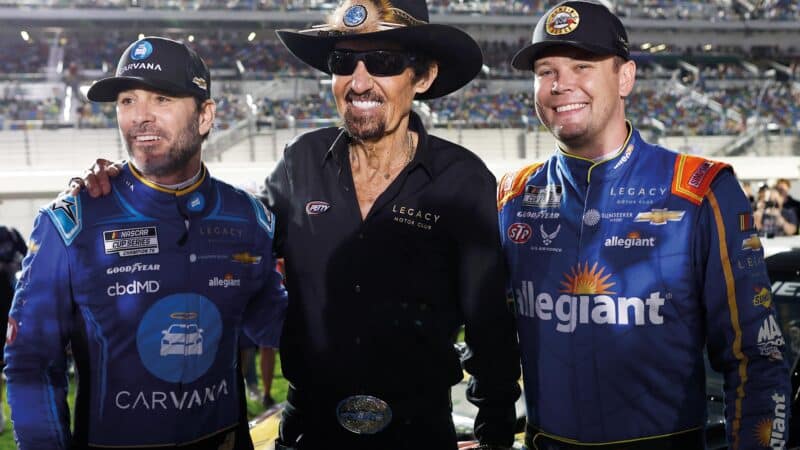
Johnson, Richard Petty and Legacy team driver Erik Jones.
Getty Images
MS: Many of us have been excited to see you racing historic cars at Goodwood recently. How and why did you get into this very different side of the sport?
JJ: That was Dario [Franchitti], when I was racing in IndyCar with Ganassi. He said it was great and he got Scott [Dixon] involved as well, so that was fun. He arranged for me to drive a Cobra and a Ford Galaxie in 2022 when the Revival didn’t clash with the IndyCar schedule. I love driving these beautiful old cars, it’s a lot of fun. Dario said I’d love the event, and I did. I was more comfortable in the Cobra and the Galaxie than I was in IndyCar because they’re much more like a NASCAR. They move around a lot more, so the driving style is similar. Right-hand drive takes time to get used to, and the gearshift is on the wrong side… but hey, Goodwood is a beautiful circuit, and then there’s all the fans who turn out in their period clothing. There’s nothing like it anywhere else and it’s certainly not like the motor racing I’ve ever been involved in. You get to ride to the track in some wonderful classic cars, there’s a party atmosphere, a glass of champagne – that’s not what I’m used to. This year I raced an Austin A40 and had a great battle with Jenson [Button] in an Alfa Romeo Giulietta. That was so much fun. So yeah, when there’s an opportunity, I’ll do some more.
